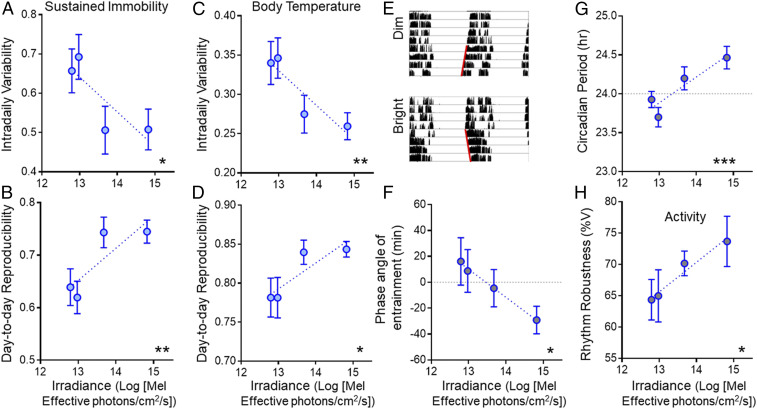Fig. 2.
Impact of increasing daytime light intensity on reproducibility and robustness of circadian rhythms under entrained and subsequent free-running conditions. (A) Intradaily variability and (B) day-to-day reproducibility of the sustained immobility rhythm as a function of daytime irradiance under entrained conditions. (C and D) Same as in A and B but for the Tb rhythm. (E) Representative wheel-running activity actogram for an R. pumilio over the last 4 d of entrainment under dim (Top) or bright (Bottom) irradiance, and subsequent 4 d of free run in constant darkness (note difference in slope of red lines fit to activity onsets in free run between conditions). (F) Relationship between phase angle of entrainment for wheel-running activity rhythm and daytime irradiance. (G) Free-running period and (H) robustness of the activity rhythm across all animals as a function of the prior entraining irradiance. Values are expressed as mean ± SEM (n = 12, A–D; n = 11, F–H); significant relationships identified by linear regression (*P < 0.05, **P < 0.01, and ***P < 0.001).

